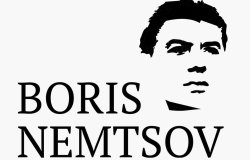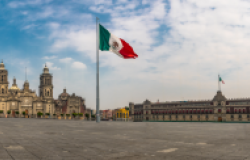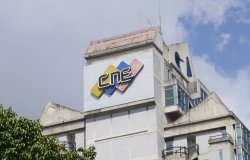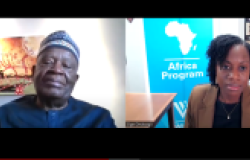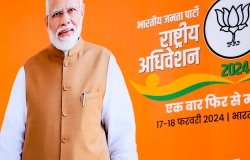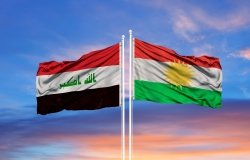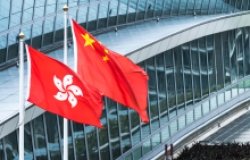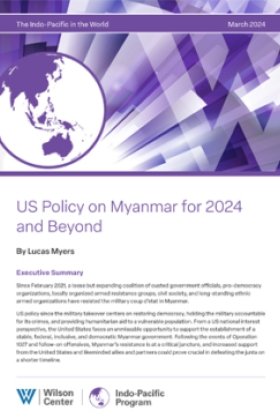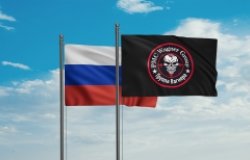Tehran’s Promise
"After decades of living in a pariah nation, Iranians seem to crave normalcy—but on their own terms. Figuring out their relationship with the outside world is a big part of the transition," writes Robin Wright.
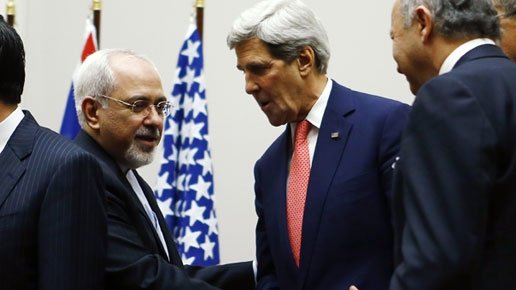
As the diplomacy on Iran’s nuclear program entered a final phase, in Europe, I visited the tomb of Ayatollah Khomeini, the ideologue of Iran’s 1979 revolution, in Tehran. One of the grandest mausoleums in the world—its shimmering dome is visible for miles—was under expansion. The Imam’s bare receiving room, in his home, was preserved after he died, in 1989, in tribute to his modesty, but renovations at his tomb featured vaulted ceilings, lined with intricate mosaics, that soared stories high, and epic arches adorned with tiles in many shades of blue. In death, Khomeini’s body is in surroundings grander than the palaces of Persian kings. Editorials compared the opulence to Hollywood sets and condemned the costs at a time of poverty among the living.
The shrine has a metro stop. The faithful still visit. But numbers are down, and so is the fervor that mobilized millions during the revolution. In a space that holds thousands, I saw some two hundred pilgrims and a group of Dutch tourists.
Meisam Shahbani, a twenty-seven-year-old factory worker, tries to visit the tomb once a year, with his wife. “For each country, one person is important,” he said. “Maybe for the United States it was the first President. Khomeini was our leader.” Shahbani also likes the pop music of Enrique Iglesias and Christopher Nolan’s films, including “Batman Begins.” He favored a nuclear deal with the United States, too, especially if jobs are created by the lifting of sanctions. “Anything that will improve the situation in Iran,” he said.
The next day, Iran commemorated the Prophet Muhammad’s Night Journey and Ascension to Heaven on a mythical steed. I spent the evening with two Iranian professors, Nasser Hadian and Bahram Taheri, old friends who had taught at Columbia and the University of Michigan, respectively. We went to an open-air restaurant, then strolled through Water and Fire Park, one of hundreds of landscaped spaces in Tehran. The center fountain is surrounded by towers that shoot off balls of fire. Opened in 2009, the park has playgrounds, terraced gardens, a planetarium, an outdoor arena, and a man-made lake, with swans. At midnight, thousands were still picnicking. Little kids on pastel bikes were weaving through the crowd. Western pop music echoed from the concrete hills of a roller park. We stopped to watch skateboarders and rollerbladers vying, at dangerous speeds, on steep half-pipe curves. A cell-phone company was hosting a show of comedians and other celebrities in the arena; it was packed. Camera crews were taping it for television.
I remarked on how much Iran had changed since the revolution, when I was nervous driving after dark, because cars were stopped at nighttime checkpoints to verify that the women inside were related to the men. Neighborhood komitehs raided homes suspected of partying and prowled streets to confront women who wore lipstick or exposed their ankles.
“You just have to go to this park to understand the state of mind among Iranians today,” Hadian, a political scientist now at the University of Tehran, said. “The revolution is in a midlife crisis. What is a midlife crisis? When you think idealism and youthfulness are gone. The revolution doesn’t want to accept that it has grown older, that it won’t achieve everything it wanted to achieve. Or that it has to adapt to survive.”
We reached the end of the park just as fireworks celebrating the Prophet’s heavenly journey went off over Tehran. People scrambled to get selfies against the flashing night sky.
In “The Anatomy of Revolution” (1938), the Harvard historian Crane Brinton likened revolution to fever. The first stage is raging delirium, as ruthless radicals eliminate the ancien régime and purge their moderate collaborators. In the second, societies begin a long, fitful convalescence, often under dictatorial rule, as the “mad religious energy” subsides. The final stage is recovery and a return to normalcy, which may even include remnants of the past, as “the religious lust for perfection” dies out, “save among a tiny minority.”
Iran’s revolutionaries are aging. Most are in their late fifties, sixties, or seventies. The Supreme Leader, Ayatollah Ali Khamenei, turned seventy-six this month. More than sixty per cent of Iran’s eighty million people are under the age of thirty-five. A baby-boom generation, born after the revolution, doesn’t share all of its priorities.
“It’s a tsunami,” Said Rahmani, the C.E.O. of Sarava, Iran’s first venture-capital fund, told me. “This generation is worldly. They’re educated. They work. They have spending power. They’re not dependent on anyone. They have a different range of thinking.”
These days, the energy—and the locus for charting Iran’s future—is less in heady debates about an ideal Islamic state than in a practical scramble to exploit twenty-first-century technology to change society. More than a third of the population uses the Internet. Giant billboards for a new smart-phone model were plastered across Tehran this summer: “NEXT IS NOW.”
One afternoon, I drove to a huge warehouse on Tehran’s outskirts to see Saeed and Hamid Mohammadi, thirty-six-year-old identical twins. They are groundbreakers in the first generation of startups in Iran. In 2007, they created Digikala, the Amazon of Iran. It accounts for more than eighty per cent of online retail, according to Hamid. The Economist reported its value last year at a hundred and fifty million dollars.
The twins took me on a tour of the warehouse. A red motorcycle—the company’s iconic delivery vehicle—decorated the lobby. Aisle after aisle had shelves stacked with computers, refrigerators, books and DVDs, home appliances, perfumes, electric toothbrushes, guitars. Digikala sells Steinway pianos. An Iranian-American in California had just ordered a Mother’s Day present for delivery in Tehran, Hamid said.
For centuries, the bazaar was the heart of Iran’s economy, and one of the three traditional arms of power, with the clerics and the military. In 1979, the Shah was forced to abandon the Peacock Throne after the bazaaris and the clergy turned on him. The bazaar is still a big player, but Digikala and other startups have created a new space in society; the twins are proudest of the flow of information in customer reviews. E-commerce increasingly defines market prices, too.
“Five years ago, the profit margin for consumer electronic goods sold in Iran was nine or ten per cent,” Hamid said. “Because of e-commerce, the traditional market now can’t sell for more than three or four per cent. We forced the market down—and made a fortune in the process.”
The Internet is also “one of the central battlegrounds between hard-liners anxious to control all expression and access in Iran and the majority of the population,” according to the International Campaign for Human Rights in Iran. Many Iranians use virtual private networks to circumvent censorship of millions of Web sites and social media—and so do many of the theocrats. The Supreme Leader and the President have taken to using Twitter, Facebook, YouTube, and Instagram to propagate their messages, in Farsi and in English.
The rivalry for Iran’s future has played out over WhatsApp, Viber, and Tango. All three are used heavily to make free calls, send messages, and post photos or videos. They’re also ways to share the deliciously naughty political humor that Iranians love, without getting caught by the Committee to Determine Instances of Criminal Content. The committee, which is part of the Ministry of Justice, can prosecute people for an array of vague offenses, including “disturbing the public.” It was sanctioned by the United States in 2013 for barring freedom of expression. Last year, the regime proposed “smart filtering,” instead of blocking sites altogether. But it may already be too late to totally monitor the Internet in Iran.
“Iran is going through the kind of I.T. boom that the United States went through in the nineteen-nineties,” Rahmani said. Some companies have floundered, others have flourished. Aparat is the Iranian YouTube. Hamijoo, the equivalent of Indiegogo, is a crowd-funding site that raises money for film projects and the arts in Iran. Nazanin Daneshvar launched a Groupon clone in 2011, when she was twenty-six. Called Takhfifan—from takhfif, or “discount,” in Farsi—it works with more than ten thousand merchants and has more than a million subscribers. “No one could believe this could exist in Iran,” Daneshvar told me. “When I’m questioned, I say, ‘Do you think we’re riding camels?’ Obviously, don’t judge Iran just by what the clerics say at Friday prayers.”
Mohammad-Reza Khatami and Zahra Eshraghi are one of Tehran’s power couples. Khatami, who has salt-and-pepper hair and a short beard, led the Islamic Iran Participation Front, a leading reformist political party; he was the deputy speaker of parliament from 2000 to 2004. His older brother, Mohammad Khatami, was President of Iran from 1997 until 2005. Eshraghi is the granddaughter of Ayatollah Khomeini and a women’s-rights activist. A striking woman, she was dressed in a leather skirt and spike heels when I visited their apartment, in the foothills of the Alborz Mountains.
“Everything is better!” Khatami told me, over melon smoothies and cake. “Nobody thought that the situation might have changed this much after the very bad times we had for those eight years.” He was referring to the tumultuous two terms of President Mahmoud Ahmadinejad, who succeeded his brother.
Yet the revolutionary deep state remains ubiquitous. It continues to devour its own élites. Former President Khatami can’t appear at public events. He is not allowed to travel, and the Iranian media are not allowed to quote him. Former Prime Minister Mir-Hossein Mousavi, who led Iran during the eight-year war with Iraq, and the former speaker of parliament Mehdi Karroubi, a cleric, have been under house arrest since 2011. Both ran for President in 2009, losing to Ahmadinejad. They were labelled “seditionists” for alleging election fraud. Two of former President Hashemi Rafsanjani’s children have been jailed. His daughter, a former member of parliament who served on Iran’s Olympic Committee, was convicted, in 2012, of “spreading propaganda against the regime.” His son, a businessman, was sentenced in June to ten years for security offenses and corruption.
No administration has been immune. Two of Ahmadinejad’s vice-presidents were charged this year with crimes, one with embezzlement and money laundering.
“Famous politicians are under siege,” Khatami said. “All of us in the Islamic Iran Participation Front have files open in the judiciary. There are no charges—yet. But the file is open. And every week we go to the judiciary for questioning and to be asked different things. It’s to pressure us.”
The “principlists”—revolutionary purists elected to public office, or serving invisibly in the judiciary and the intelligence services—can be even more ruthless with ordinary Iranians. Last month, the U.S. State Department, in its annual Human Rights Report, cited Iran for, among other things, politically motivated repression; disappearances; “cruel, inhuman, or degrading” punishments; arbitrary arrests; impunity for security forces; denial of fair public trials, which resulted in executions without due process; and the lack of an independent judiciary. Three Iranian-Americans, including Jason Rezaian, a Washington Post correspondent, are now detained in Tehran. A former F.B.I. agent disappeared after a trip to an Iranian island in 2007.
This fall, an election season kicks off. The poll—for parliament and the Assembly of Experts—is due in February. It could alter the internal balance of power. Hard-liners have had a tight hold on all three branches of government since President Khatami’s reform era ended, in 2005. Hassan Rouhani’s election to the Presidency, in 2013, began to swing politics back to the center. Now a second branch is up for grabs. In a May poll, half the Iranians surveyed said that they preferred candidates who support Rouhani. Only a quarter favored his critics. “If there’s a nuclear deal, twenty to twenty-five per cent of people’s votes will go to candidates who favor the Rouhani government,” Hamid Reza Taraghi, of the hard-line Islamic Coalition Party, told me.
The election for the Assembly of Experts, a council of eighty-six theologians, is equally important. The assembly selects (and, in theory, can oust) the Supreme Leader, and is widely expected to pick Khamenei’s successor, shaping the next political era—and its limits.
“The original generation of revolutionaries will disappear in the next ten years,” Saeed Laylaz, an economist and a former adviser to President Khatami, said. Laylaz, who was imprisoned for a year after the 2009 election, added, “The new assembly will reflect the new generation.”
All of Khomeini’s grandchildren—there are fifteen—back reformers, Eshraghi said. Half a dozen of the great-grandchildren were educated in the West. Some of the grandchildren have considered running for parliament or the assembly. Eshraghi, who is the most outspoken, registered to run for parliament in 2004. But the Guardian Council, a supervisory body of theologians and jurists, disqualified Eshraghi and her husband, then an incumbent, along with more than two thousand other reformist candidates. In 2010, Khatami’s Islamic Iran Participation Front was banned altogether. A loose coalition of reformers, moderates, and centrists hopes to flood the field with candidates, so that even if they are disqualified in large numbers many of them can still compete.
“The famous names will not appear in the next election—especially the ones hard-liners accuse of trying to change the regime,” Khatami told me. He, too, has been banned from leaving the country. He found out last September, when he showed up at Tehran’s airport, named after his wife’s grandfather, for a flight to Istanbul. A nephrologist by training, he was scheduled to deliver a paper on kidney transplants. “My passport was taken, without any previous notice,” he told me. “This is ordinary in Iran.”
One evening, I went to Tehran’s Honar (Art) Hall to see a performance of “Huckleberry Finn.” The lobby was filled with boisterous kids playing tag, eating popcorn, and buying toys at a concession stand. The girls were in bright dresses and shorts. Hijab, or modest Islamic garb, is not required until puberty. A poster, in Farsi and English, featured Huck in a straw hat and suspenders.
Backstage, the lead actor was in a chair getting freckles. “It’s not the whole story from Mark Twain,” Ehsan Majidi, the play’s director, told me. The Iranians wanted their own version—or thought they could do better than Twain. A local playwright had added plot twists and new characters.
After decades of living in a pariah nation, Iranians seem to crave normalcy—but on their own terms. Figuring out their relationship with the outside world is a big part of the transition. They have tried repeatedly and failed.
America, particularly, haunts Iran. One of the world’s first great powers—the Persian Empire spanned three continents—it is both infatuated with and infuriated by the current superpower. Khomeini preached the dangers of gharbzadegi, which translates as “Westoxication” or “West-struckness,” in music, theatre, movies, art, and society. “Iran has been hurt more by Westernized intellectuals than by any other group of men,” he said.
The hostile rhetoric hasn’t changed. At Friday prayers, as on previous visits, I heard thousands chanting “Death to America.” This year, twenty times.
But America has crept back in, shaping everything from Iran’s self-perception to its cultural appetites and fast-food cravings. Last year, I attended a musical at Tehran’s Opera House which included hits by Frank Sinatra and Bob Dylan, and pictures flashing in the background of Ray Charles, Simon and Garfunkel, and Neil Diamond. This year, I went to one of the more than a dozen franchises of Pizza Hot, which ripped off Pizza Hut’s trademark logo, brown boxes, and slogans, in English: “Share a Slice of Hope.” I also stopped at Mash Donald’s, a burger joint adorned by a faux Ronald McDonald; the staff’s uniforms and caps bore the golden arches. (Mash is short for Mashhadi—someone who is from the holy city of Mashhad or has made the pilgrimage there.)
After the revolution, the Shah’s art collection—which included works by Lichtenstein, Pollock, Warhol, de Kooning, Cassatt, and Calder—was considered sacrilegious and packed away. Many of them are being shown again, at the Museum of Contemporary Art. This spring, Tehran displayed paintings by Sargent, Rothko, Hopper, and other Americans on billboards promoting art: “A gallery as big as a city.”
Mojtaba Mousavi, then the manager of urban art for Tehran’s municipal council, told me, “The selection of works was totally artistic.” Mousavi and I met in the elegant building where Roosevelt, Churchill, and Stalin stayed during the 1943 Tehran conference, when they plotted strategy against Germany and Japan.
Iran pines for that place of pride in the world again. Before the nuclear deal was announced, its standing had never been lower. A Pew Research Center poll reported in June that the view of the Islamic Republic was “mostly negative worldwide,” and that there had been a “precipitous” decline in its popularity even in the Muslim world.
Iran’s public clearly wants reentry. A recent poll found that fifty-seven per cent favored a nuclear deal. Only fifteen per cent opposed one. Three-quarters also supported more talks between Tehran and Washington, more educational and cultural exchanges with the United States, and much more trade.
“ ‘Death to America’? This is politics and not related to people’s thinking,” Elnaz Mobahat, the owner of Manhattan Grill, one of Tehran’s chic new restaurants, told me. The place is adorned with American kitsch. One wall features photographs of sports stars, including Tiger Woods. “There are fourteen million people in greater Tehran, and maybe one hundred thousand attend Friday prayers,” she said. “Most people say we should talk to the Americans and solve our differences. We can both benefit. There are many investment opportunities in the oil and food industries.” She pointed to the ketchup bottles on every table. “Look, we use Heinz!”
The Iran deal, announced on July 14th, capped a dozen years of secret overtures, false starts, clandestine meetings, and unpublished correspondence between Washington and Tehran. Despite an eventual rapport between U.S. and Iranian envoys, the talks nearly collapsed at least five times in the final nine months. There were many quarrelsome late-night sessions.
“The Americans are much better carpet merchants than any Iranian could dream of!” the Iranian Foreign Minister, Mohammad Javad Zarif, told me, during a troubled period in the final weeks.
The Iranians, a senior State Department official at the negotiations said, “are quite good at trying to get you to pay for what you got—twice.”
Years earlier, Secretary of State John Kerry and Zarif had both played pivotal roles in getting the process started, through back channels: in 2003, as Iran’s U.N. Ambassador, Zarif orchestrated a secret overture, nicknamed “the grand bargain.” It went nowhere, but the initiative marked him in Washington as a potential interlocutor. In late 2011, Kerry, as chairman of the Senate Foreign Relations Committee, made an unannounced trip to explore an offer by the Sultan of Oman to host covert diplomacy. That led to five secret rounds of lower-level U.S.-Iran talks, in Muscat, in 2013.
The most serious diplomacy since Washington severed relations with Tehran, in 1980, began shortly after Kerry and Zarif were appointed as their nations’ top diplomats. Their first meeting, in September, 2013, was supposed to be a handshake and an exchange of pleasantries in a United Nations hallway. The idea was to “get out without causing any incidents and build from there,” a Kerry aide recounted. But, at the last minute, Kerry decided to pull Zarif into an empty office, near the Security Council chamber, for a substantive conversation.
“Kerry’s whole approach to diplomacy writ large is premised on the belief that personal relationships matter, because they enable you to get things done, even in very difficult situations,” the aide said. “It was Kerry’s belief that this was going to be a relationship that would really matter.” Zarif was willing. The two men talked, alone, for almost thirty minutes.
It got much harder over time. The world’s five other major powers—Britain, China, France, Germany, and Russia—were technically equal players. But the United States increasingly took the lead in one-on-one meetings with the Iranians. More than a year after that first encounter, the chasm on core issues was still deep, despite an interim Joint Plan of Action, a confidence-building step that curtailed Iran’s nuclear program in exchange for modest sanctions relief. It did not address long-term limits or rewards.
As the original deadline for a final deal loomed, last November, Kerry and Zarif met in Oman. The senior State Department official described the meeting as “extremely contentious.”
Kerry’s aide said, “Both sides left thinking that we had just spent a lot of hours and a lot of time under very tense conditions and in very tense conversations that made little progress.” A deal looked doubtful. A few days later, the six powers agreed to extend the deadline until June 30th.
In February and again in March, Kerry was on the verge of backing away from the conversations entirely, U.S. officials told me. On February 21st, as Kerry was scheduled to fly from London to Geneva, Wendy Sherman, the Under-Secretary of State and chief nuclear negotiator, called him to say, “We are nowhere.” Iran was backtracking. “I really don’t think you can come under these circumstances,” she said. Kerry instructed her to tell the Iranians that he would skip Geneva and fly home. The next morning, Iran was more forthcoming, and Kerry subsequently flew to Switzerland.
On March 27th, in Lausanne, tempers flared three nights before the deadline of a so-called Framework to define what each side would accept in a final deal. At the last minute, negotiating with the Americans, Iran took an important matter off the table. The five other major powers were supposed to show up within a day, but there was so much left unresolved that Kerry decided he might have to abort. He arranged to go to Zarif’s suite. At 10 P.M., they met alone. Kerry’s style is to coax rather than threaten. But this time, two U.S. officials told me, Kerry was blunt. He told Zarif that unless there was progress the sessions were “basically done.” The next day, the issue was back on the table. Six days later, the major powers and Iran announced the outlines of a potential agreement.
“There were moments when you just had to push through,” Kerry’s aide said. The most confrontational exchange took place on May 30th. The talks were “brutal, just brutal,” the State Department official recalled. According to Kerry’s aide, “It was a lot of the two sides banging their heads against each other.” At one point, Zarif got up, walked around the room, and announced, “I have to leave.” He then sat on a chair against a wall and put his head in his hands.
Kerry, known for being unflappable, lost it, too. Toward the end of six difficult hours, he slammed his hand down on the conference table so hard that his pen flew across the table and hit one of the Iranians. “It stunned everyone, because it was so out of character,” the State Department official said.
Both sides left Geneva feeling deeply pessimistic. The next day, Kerry vented his frustration by taking a vigorous ride from Geneva into France on his racing bike, which he often brings on trips. As he was starting up the challenging Col de la Colombière, he rode into a curb and flew off the bike. His right femur was badly broken, and he had to be medevaced to Boston for surgery. After the news broke, one of the first e-mails he received was from Zarif, wishing him well.
The final deadline was supposed to be June 30th. The negotiating teams worked throughout June to get the talks back on track. Kerry and Zarif returned to Vienna for the final round on June 28th, two days before the deadline. They missed it. The major powers had to extend it three times. Ministers from other countries flew in and out of Vienna as the U.S. and Iranian teams debated their differences.
The diplomacy was supposed to be transactional. But at moments it was transformational, for two countries at odds about so much else. For twenty months, the Americans and the Iranians ate separately, often in small, adjacent dining areas. “At a certain point, it just started to feel strange that they had never actually shared a meal together,” Kerry’s aide said. Zarif invited Kerry and his team to lunch on July 4th in the Iranians’ dining room, where he had ordered Persian food.
“It was ten times better than the food we ate on our side of the house,” the aide told me. “It was a moment where it was clear—we knew it, sort of, without remarking on it—that these relationships had really developed over time.” Kerry and Zarif commiserated about pressures at home. Kerry mentioned members of Congress who were complaining that local political ads already opposed any deal with Iran. Zarif told Kerry about an Iranian newspaper warning that he shouldn’t come home if he compromised too much with the Americans.
The chasm was still deep. “Even when we can be, you know, just conversational with each other, there can come a moment in the middle of that—I would say them, more—when we revert back to form,” the State Department official said. “It can all of a sudden come out of the blue, when I think they can realize they’ve gotten too familiar.”
The next meltdown was on July 5th. The Iranians regularly griped about the indignity of international sanctions tarnishing a historic civilization and causing unnecessary suffering. During one long-winded tirade by Zarif, Kerry cut him off: “You know, you’re not the only nation with pride.” Tensions increased that afternoon. When Kerry and Zarif started shouting at each other, a Kerry staffer slipped in to say that they could be heard down the corridors of the Palais Coburg.
The next night, with another deadline imminent, Kerry offered Zarif a package deal, to get beyond the interminable issue-by-issue squabbles. In a meeting with the major powers, Iran accused them of pulling back from agreed terms. At one point, Zarif shouted, “Never threaten an Iranian!” (When news of the flap spread, #neverthreatenaniranian quickly became a popular Twitter hashtag.)
“Or a Russian!” Sergey Lavrov, the Russian Foreign Minister, said, in an attempt to break the tension. Subsequent reporting implied that Russia sided with Iran, a long-standing ally. In fact, the Americans claimed, Lavrov regularly played a constructive role in calming the emotional Zarif.
The U.S. and Iran remained so far apart that Kerry told Zarif and the other foreign ministers that he was prepared to leave the next day. He would be available by phone if Zarif wanted to negotiate seriously. “A lot of us felt, at that point, like we were in real trouble,” Kerry’s aide said. The next day, Zarif brought a point-by-point response to the proposal.
“It’s such a complex set of relationships,” the State Department official said. “We know each other. All of the mistrust that has been there for these decades remains. It’s not gone. It’s incredibly present all the time. But it fights against the fact that we’ve spent two years getting to know each other.”
Over the next week, negotiations sometimes drifted, as the parties nibbled away at differences. The terms to limit Iran’s nuclear program were wrapped up first. The most sensitive issues often had a link to Iran’s military, especially the powerful Revolutionary Guards. The final differences were sorted out in a meeting, shortly before midnight, on July 13th, with Kerry, Zarif, and Federica Mogherini, of the European Union. “They basically kicked everybody out who wasn’t a minister and figured out the end,” Kerry’s aide said.
The next morning, Iran and the six major powers met to formally confirm the terms. The final statement read, “With courage, political will, mutual respect, and leadership, we delivered on what the world was hoping for: a shared commitment to peace and to join hands in order to make our world safer.”
Afterward, each minister made remarks about the collaboration. Kerry, who spoke last, recalled going off to war as a young man, the traumatic experience of Vietnam, and his commitment, when he returned, to end that war. The diplomacy with Iran, he told his peers, was one time that he could prevent the horrors of war.
At the end of Kerry’s comments, his eyes welled up, his aide said. Others teared up, too, including the Iranians. Then everyone applauded.
Zarif went off to make a brief announcement with Mogherini, while Kerry watched, on an iPad, President Obama’s remarks from the White House about the potentially historic deal. When Zarif finished, he walked backstage and patted Kerry on the shoulder. They shook hands, the aide recounted. “And that’s how he said goodbye.”
As the negotiations played out, I toured the old U.S. Embassy in Tehran. A boxy red brick building, it resembles a mid-twentieth-century American public school. American diplomats nicknamed it Henderson High, for Loy Henderson, the Ambassador who lived there in the early fifties. Henderson helped orchestrate Operation Ajax, the 1953 C.I.A. coup that ousted the democratically elected Prime Minister Mohammad Mossadegh after he nationalized the oil industry, dominated by Western interests. The C.I.A. and British intelligence then restored the Shah, who had fled the country, to the throne. Mossadegh was imprisoned; his foreign minister was executed.
A quarter-century later, students seized the American compound when the United States took in the ailing former Shah for medical treatment. Two ringleaders told me they believed that Washington was plotting, again, to restore the monarchy. It was supposed to be a brief protest—three to five days. Then Ayatollah Khomeini endorsed the takeover on national radio. Fifty-two American citizens were held captive for fourteen months, effectively ending the Presidency of Jimmy Carter. I stood at the foot of the plane that flew the hostages to freedom, in Algiers, in 1981.
The embassy building is now a museum. The rooms used for spycraft are particularly well preserved: cryptology and encoding machines, passport-forgery equipment, secret passageways, and shredders all look as if they were still in use and diplomats had just gone for a coffee break. Three mannequins with bad wigs are seated around a table in the insulated “glassy room,” once used for secret conversations.
The embassy sits in a compound supervised by the Organization of Student Basij. The Basij, a paramilitary arm of the Revolutionary Guards, helps enforce revolutionary order, often ruthlessly. Other buildings in the compound are used as offices, including one for the group’s news service. Next to the chancery the Basij has erected a cupola of aqua tiles above five black stone markers, which bear the names of hostage-takers who later died in the war with Iraq.
Under the new agreement, the U.N. nuclear watchdog will monitor Iran’s facilities. But the United States will be the main enforcer in the event of cheating, breaching, smuggling, or double-dealing. The options range from “snapback” sanctions to war. The question is how much the painful past will affect the future of a deal. Decades of verification lie ahead.
I asked my guide, a thirty-eight-year-old docent named Mohammad Reza Shoghi, about the diplomacy with the United States. He replied, “President Obama and his wife gave us greetings at Nowruz”—the Persian New Year—“but then he said all options, including military force, were still on the table. Which did he mean? Which should we trust?”
Celebrations erupted across Tehran after the announcement of the nuclear deal, including one at the Water and Fire Park. The deal, if it gets past Congress and Iran’s parliament, would be the most significant nonproliferation agreement in decades. Diplomacy failed to prevent the four most recent members of the nuclear club—Pakistan, India, Israel, and North Korea—from producing a bomb. None are members of the Non-Proliferation Treaty. (Iran is.) Islamabad is now estimated, by Ploughshares Fund, to have a hundred and twenty nuclear bombs; New Delhi a hundred and ten; Jerusalem eighty; Pyongyang around ten. Nine countries, altogether, have almost sixteen thousand nuclear weapons—most of them made by the major powers at the Iran talks.
The number of bombs worldwide has actually declined since the peak of proliferation, in the eighties, thanks to other agreements. So the Iran deal is important for global trends, too. The Obama Administration is calculating that it could help to check a nuclear arms race in the Middle East.
The White House claims that, with a deal, future Presidents will be better off even when the various provisions expire. “The breakout time”—the time required for Iran to develop a nuclear weapon—“in 2025 and for some years after will be longer than it is today,” a senior Administration official told me. “By then, we’ll know a lot more about what Iran is doing. The U.S. will be in a better position, owing to the scrutiny and visibility of Iran’s program. And inspections are set up forever.” Plus, he added, “our military capabilities will be much enhanced in ten or fifteen years if Iran goes for the bomb.”
Over time, however, the deal may be vulnerable to distractions, regional sideshows, and failure—as a result of issues that have nothing to do with the bomb. A major hurdle throughout the diplomacy was disentangling the nuclear dispute from other flashpoints. The United States and the Islamic Republic have divergent political tenets, world views, and alliances. Those differences will linger.
The deal is inextricably enmeshed in Middle East tensions. The State Department’s annual terrorism survey, released last month, chronicled Tehran’s increased aid to Iraq’s militias, the Assad regime in Syria, Hezbollah in Lebanon, and Hamas in Gaza, along with “subtle efforts at growing influence elsewhere, including in Africa, Asia, and, to a lesser extent, Latin America.” Tehran provided a billion dollars in credit to Damascus this month to ease the economic strains of war, on top of more than three billion in credit in 2013. Israel has repeatedly vowed to take unilateral military action if its interests are threatened.
The deal is also embroiled in disputes between Islam’s Sunni majority and its Shiite minority. The Middle East is riven by sectarian wars—most notably in Iraq, Syria, and Yemen—that threaten to reconfigure its map. Each of those wars pits allies of Saudi Arabia, the Sunni guardian of Islam’s holiest sites, against Iran, the world’s largest Shiite power. In the final weeks of diplomacy, the foreign minister of an Arab country told me, earnestly, that he believed Iran was intent on taking over Mecca.
Iran has the biggest military in the Gulf (twelfth worldwide), vast petroleum resources, and a consumer-goods-hungry population larger than its seven Gulf neighbors combined. Arab sheikhdoms are nervous that a deal will begin realigning U.S. interests with those of their Persian rival. Iran had been a pillar of U.S. policy until the revolution and the hostage crisis. After the rupture, Washington intensified its ties with Saudi Arabia, a desert sheikhdom that rose to prominence after the 1973 oil-price wars, and with Egypt after it concluded the 1979 peace treaty with Israel. Arabs fear that those alliances are at stake. The Persians could make a comeback. The deal could shift the geostrategic balance of power in the Middle East.
American negotiators were keenly aware of the pitfalls. Throughout the diplomacy, the Defense Department continued contingency planning. It tracked Iranian ships attempting to send aid to Houthi rebels in Yemen. It announced new aid to rebel militias fighting in Syria. It also amassed bunker-buster bombs, the deadliest device in the U.S. arsenal short of an atomic weapon. The bomb’s formal name is Massive Ordnance Penetrator, or MOP, in Pentagonese. It can weigh up to fifteen tons; it has never been used in combat. The concept originated during the hunt for Osama bin Laden in Afghanistan’s impenetrable caves. MOPs can penetrate underground tunnels, bunkers, and plants, such as the Fordo enrichment facility, under a mountain near the Iranian holy city of Qom.
“We will always have military options,” General Martin Dempsey, chairman of the Joint Chiefs of Staff, said during the final days of diplomacy. “And a massive ordnance penetrator is one of them.” A new bomb to take out a future Iranian bomb.
“Everyone who believes that overnight this relationship is going to change is naïve as hell,” the senior State Department official told me. “It’s not. It’s just too deep—particularly among Iranian government officials, many of whom were part of the revolution. So there may be a generational shift that has to take place everywhere. It’s going to take time. It’s going to take a lot of time.”
The opinions expressed here are solely those of the author.
This article was originally published in The New Yorker.
About the Author

Robin Wright
Author and columnist for The New Yorker

Middle East Program
The Wilson Center’s Middle East Program serves as a crucial resource for the policymaking community and beyond, providing analyses and research that helps inform US foreign policymaking, stimulates public debate, and expands knowledge about issues in the wider Middle East and North Africa (MENA) region. Read more
